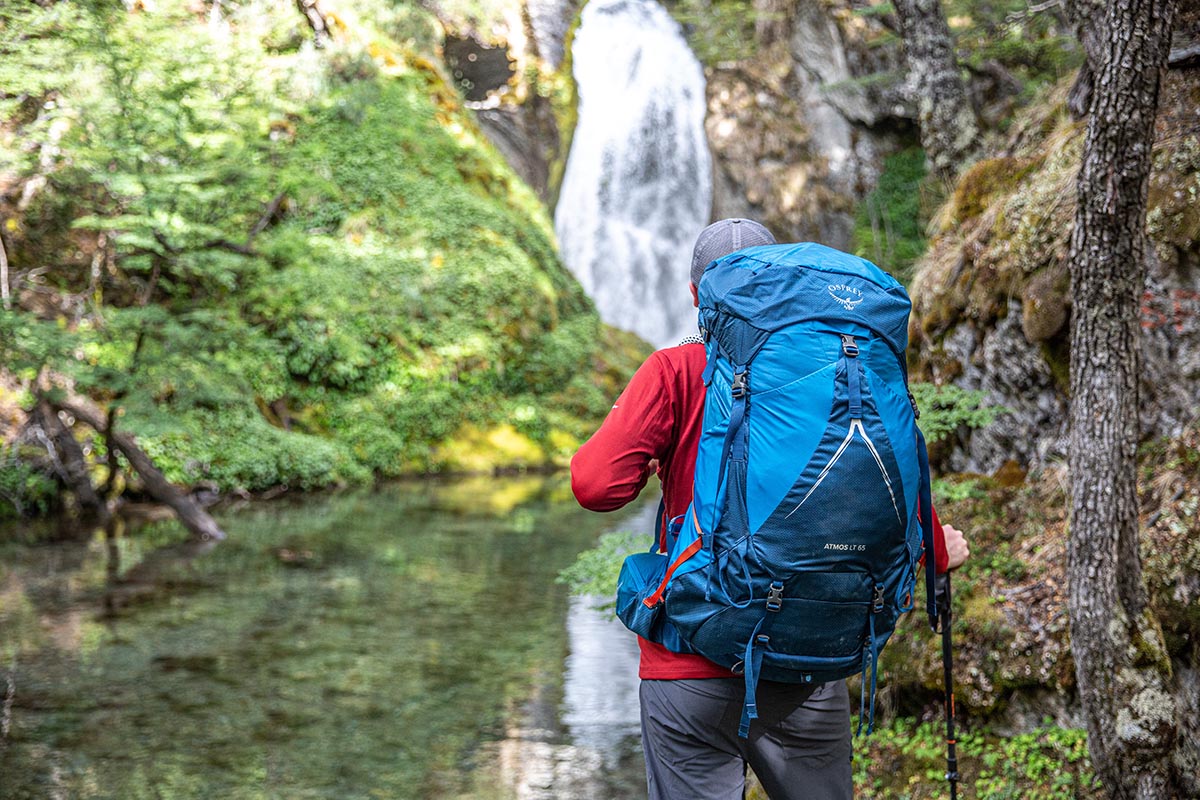
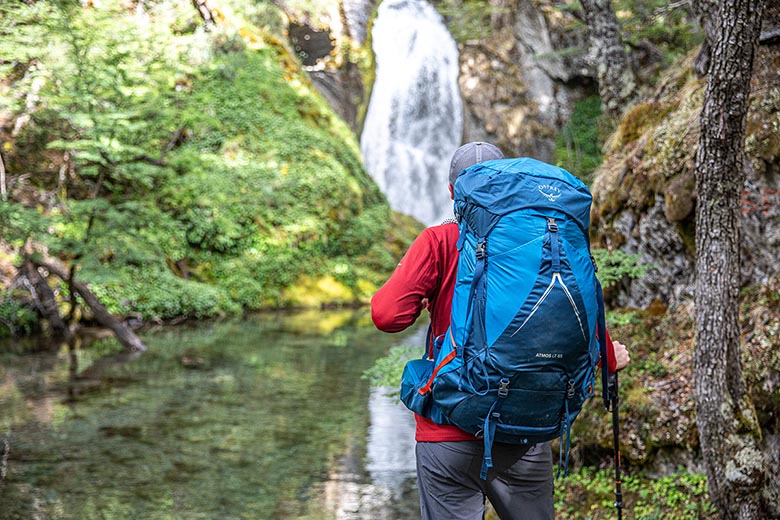
Price: $290
Weight: 4 lbs. 1 oz. (size S/M)
Capacities: 50, 65L
What we like: Carrying comfort and toughness of the popular Atmos with a half-pound weight savings.
What we don’t: Using thinner fabrics would’ve trimmed away even more weight.
See the Men's Osprey Atmos AG LT 65 See the Women's Osprey Aura AG LT 65
Osprey’s Atmos AG is an incredibly popular pack—and our current top-rated design—and they’ve added a trimmed-down “LT” model for 2023. In short, the new Atmos AG LT cuts away a half pound in weight by simplifying the organization and fit adjustments, but retains most of the goodies, including the well-loved AntiGravity suspension system. I tested the new LT 65 on a three-day trek in Southern Patagonia and came away impressed with this lightweight rethink of the Atmos. They arguably could’ve taken it a step further with thinner fabrics, but the Atmos AG LT offers exceptional carrying comfort and toughness at a competitive weight. Below I break down my experience with the pack. To see how it stacks up, check out our article on the best backpacking backpacks.
I’ve logged a lot of miles with the standard Atmos, and it was quickly clear the latest Osprey Atmos AG LT shares the same DNA. The signature AntiGravity trampoline-like mesh backpanel practically hugs you when you don the pack, and the supportive padding along the hipbelt and shoulder straps provide exceptional comfort. Additionally, the sturdy metal frame does a great job transferring weight to your hips, which was something I really appreciated as we covered steep and challenging terrain on our backpacking trip. Osprey assigns a max weight capacity of 40 pounds for the Atmos AG LT—the same as the standard AG—and that felt about right. Loaded down with weights ranging from 30 to 35 pounds, it was completely solid and felt like the pack could easily handle another five pounds or more.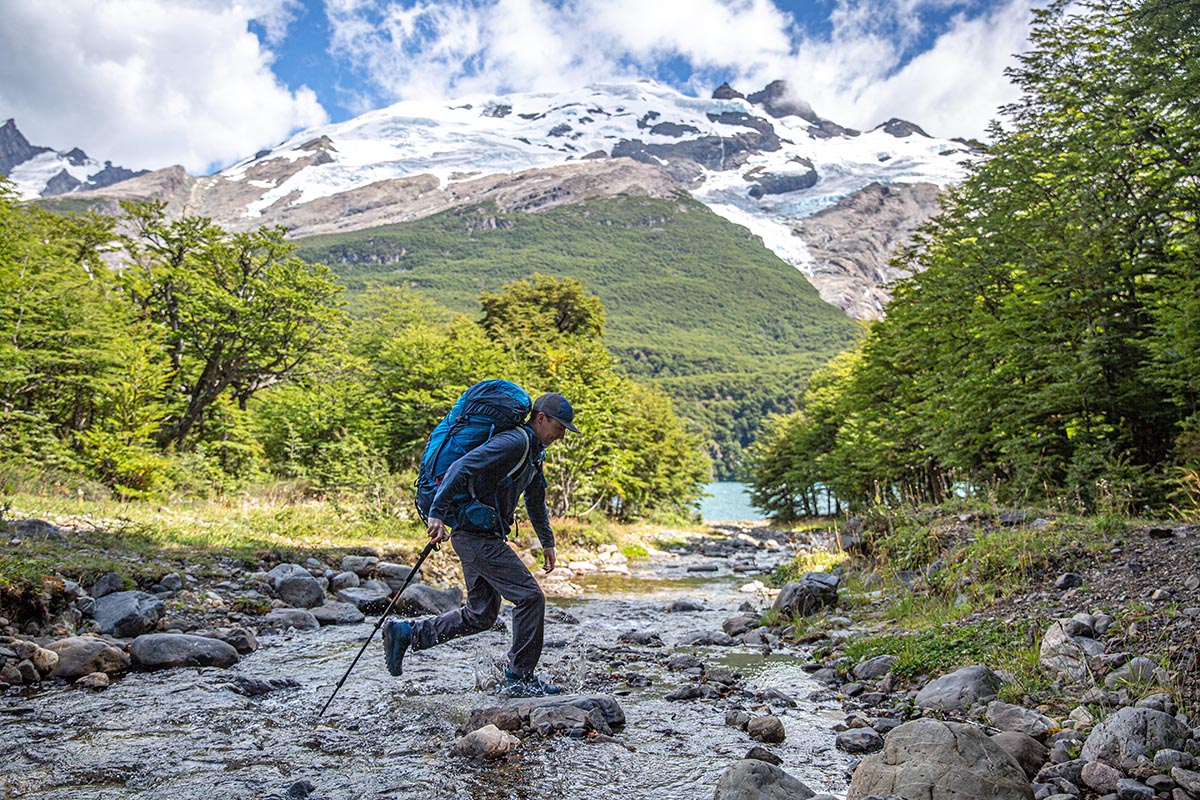
After returning from the trip, I compared the LT to my standard AG 65 pack and confirmed the similar builds. They share the Airspeed backpanel and AntiGravity suspension, and the hipbelt and shoulder strap padding has a very similar feel, too. There are some small differences in how you adjust the torso length—the LT has 5 defined slots, while you slide the standard AG’s up and down the metal frame. Plus, you can’t adjust the padding on the LT’s shoulder straps (you can, however, on the hipbelt). But for me, these small changes in fit customization didn’t have any negative impact on the trail. Among packs in the high-3-pound/low-4-pound weight class, the Atmos LT is a clear standout in terms of comfort.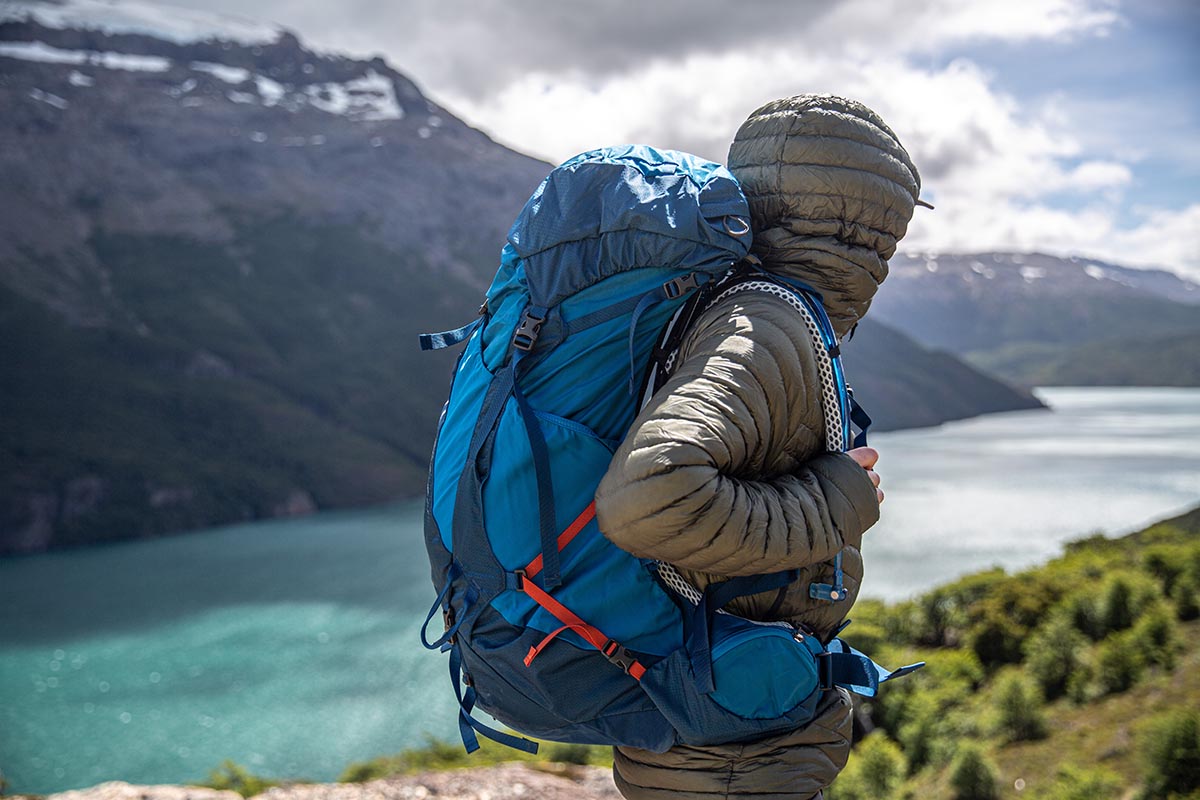
Cutting away just over a half pound from the standard model, the Osprey Atmos AG LT 65 tips the scales at 4 pounds 1 ounce in the small/medium size. Within the wider backpacking pack market, this puts it just below feature-rich heavy haulers like Osprey’s Aether 65 (4 lbs. 14.7 oz.) and Gregory’s Baltoro 65 (4 lbs. 14.7 oz.). More direct competitors that target the core multi-day backpacker include Gregory’s Zulu 65 (4 lbs. 3.3 oz.) and Granite Gear’s Blaze 60 (3 lbs. 2.7 oz.). And you can save a lot of weight if you’re willing to sacrifice some fabric durability and max weight capacity (usually under 30 lbs.) with a UL design like the Hyperlite Southwest 3400 (1 lbs. 15.6 oz.). Considering Osprey didn’t sacrifice carrying comfort or durability with the Atmos LT, we consider the weight savings a win. That said, we’d love to see a true UL model that incorporates thinner fabrics to bring the weight down even further.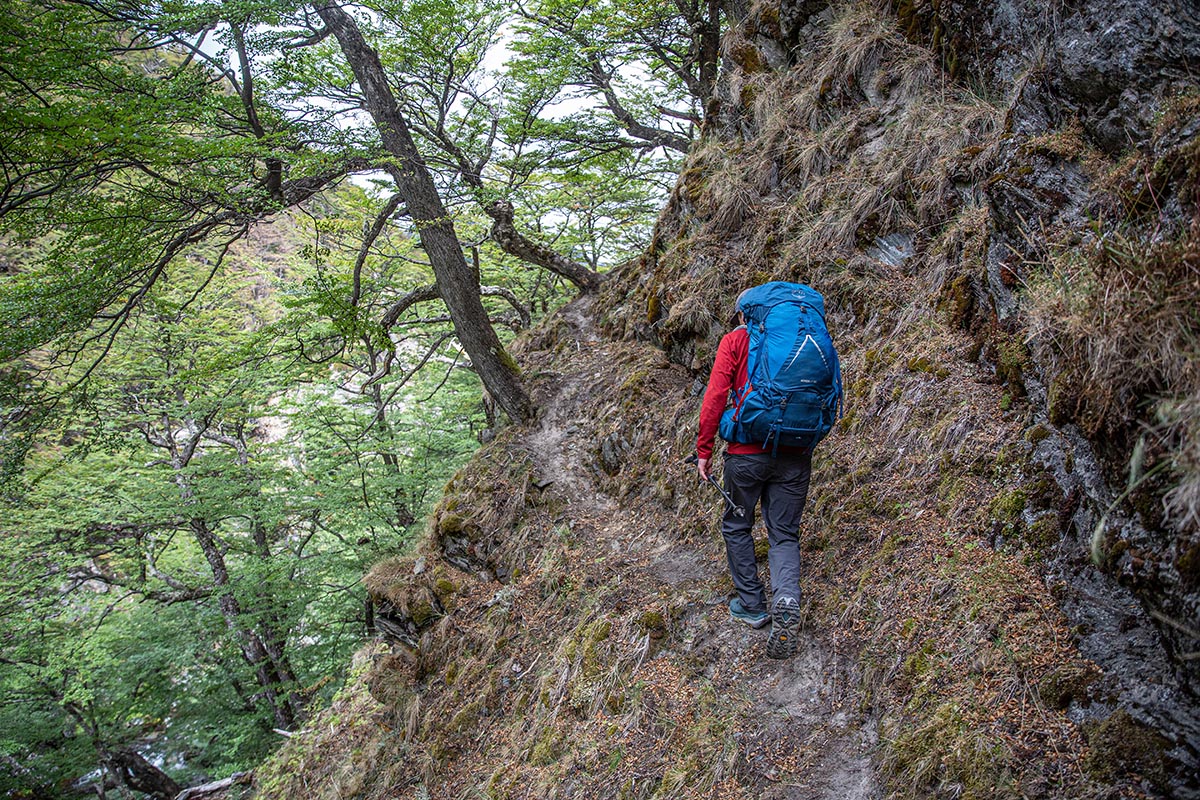
Streamlined packs are known for simplified storage, and that’s mostly the case with the Atmos AG LT. On the exterior, there are two tall water bottle pockets (with access at the top and side to grab water on the go), plus a very large and stretchy “shove-it” pocket along the front. Additionally, the lid features a single zippered access into the expansive space at the top, and you get two hipbelt pockets. The hipbelt pockets were a highlight for me: They easily swallowed large items like a phone, wallet, passport, and/or small snacks, which was great on the trail and for travel. Rounding out the design is an internal hydration bladder sleeve and exit port as well as a zippered access to the main compartment at the left-hand side (when wearing the pack). Fully unzipped, you can see into nearly the entire length of the interior from that side.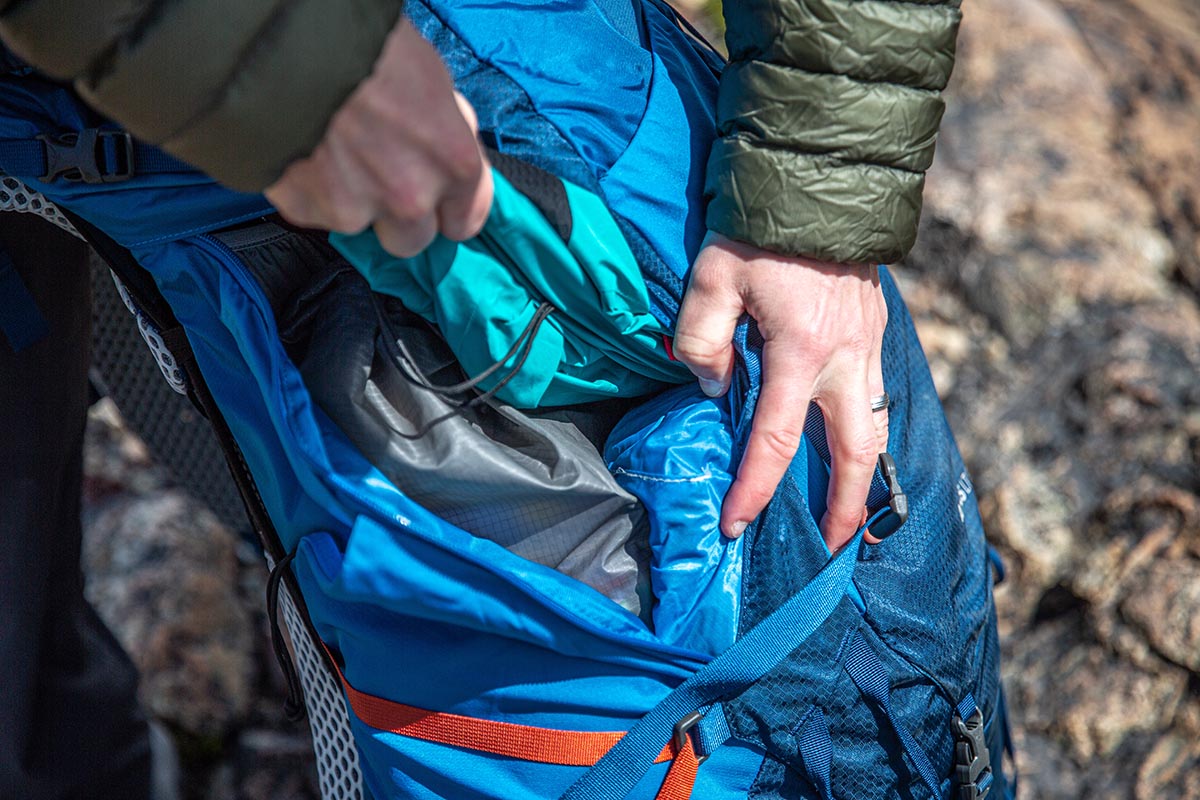
If you’re debating between the Atmos AG and AG LT packs, storage is the main area of potential compromise. We prefer the standard model’s two zippered pockets on the lid—the LT’s single, huge pocket can make it hard to separate and find small items. And having one side access to the main compartment means—no surprise—you can’t easily access the other side. That said, we don’t miss the bottom sleeping bag compartment access, and the same goes for the tall, zippered pockets that flank the front of the regular Atmos. Overall, we think Osprey did a pretty good job—with a few nitpicks—retaining functional organization in a trimmed-down form.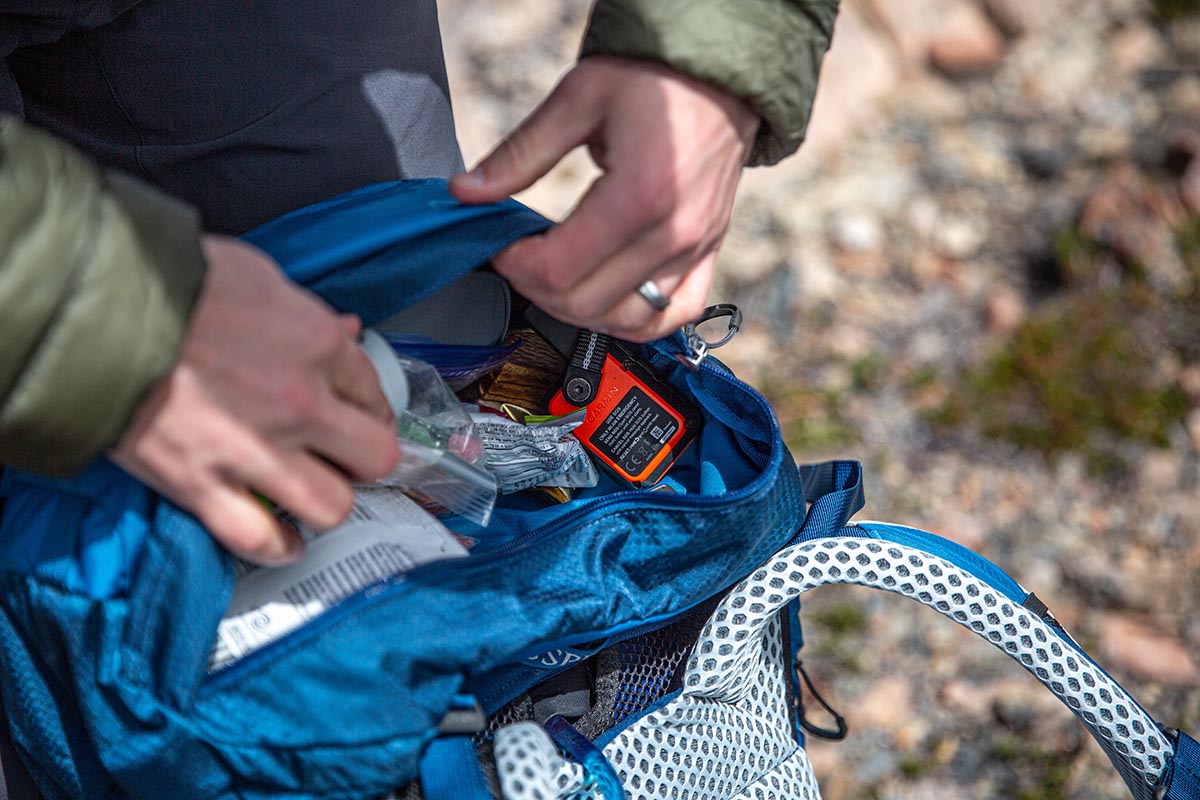
Ventilation is one of the AntiGravity suspension’s calling cards, and it’s on full display with the Atmos LT. The entire backpanel and even a good portion of the hipbelt uses the signature suspended mesh. Additionally, the shoulder straps feature an open-weave mesh fabric and porous-looking foam to help keep you from overheating. The net effect is pretty impressive: You can actually feel the air flowing behind your back, particularly if there’s a little wind. And importantly, the trampoline-like material still keeps the pack close to your body, so there isn’t a noticeable sacrifice in carrying comfort. In the end, if ventilation is a priority, this Atmos/Aura AG design is the best we’ve used.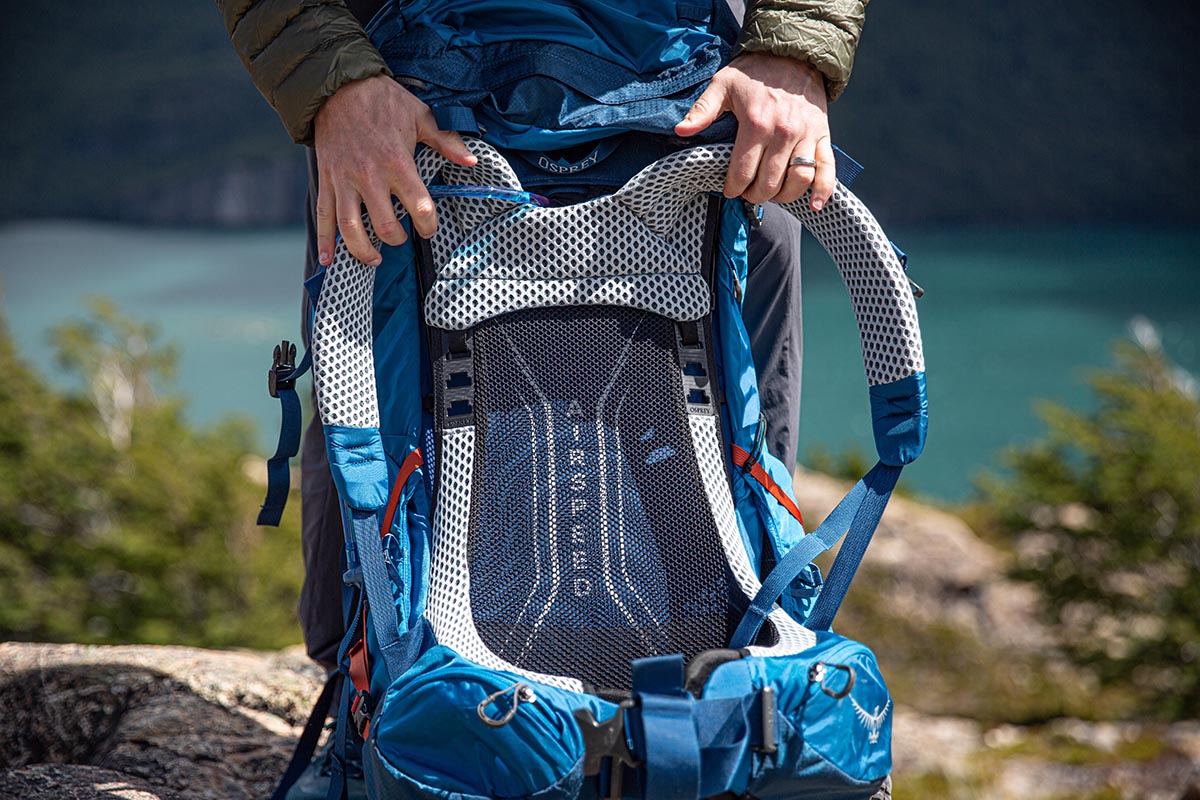
The Osprey Atmos AG LT 65 is built to keep light moisture at bay with a durable water repellent (DWR) finish on all the fabrics—including the body, base, and accent—that causes water to bead up and roll off rather than soak through. If you choose to venture out without the lid, the Atmos LT features Osprey's patented FlapJacket for water-resistant coverage over the main compartment's drawstring closure. And for sustained or heavy rain, Osprey also includes a rain cover, which stores in a dedicated compartment at the bottom of the pack and features a simple cinch to secure the perimeter. It's worth noting that you can shave about 3 ounces from your load by leaving the rain cover behind, but we only recommend this when you're confident that the forecast is free of rain.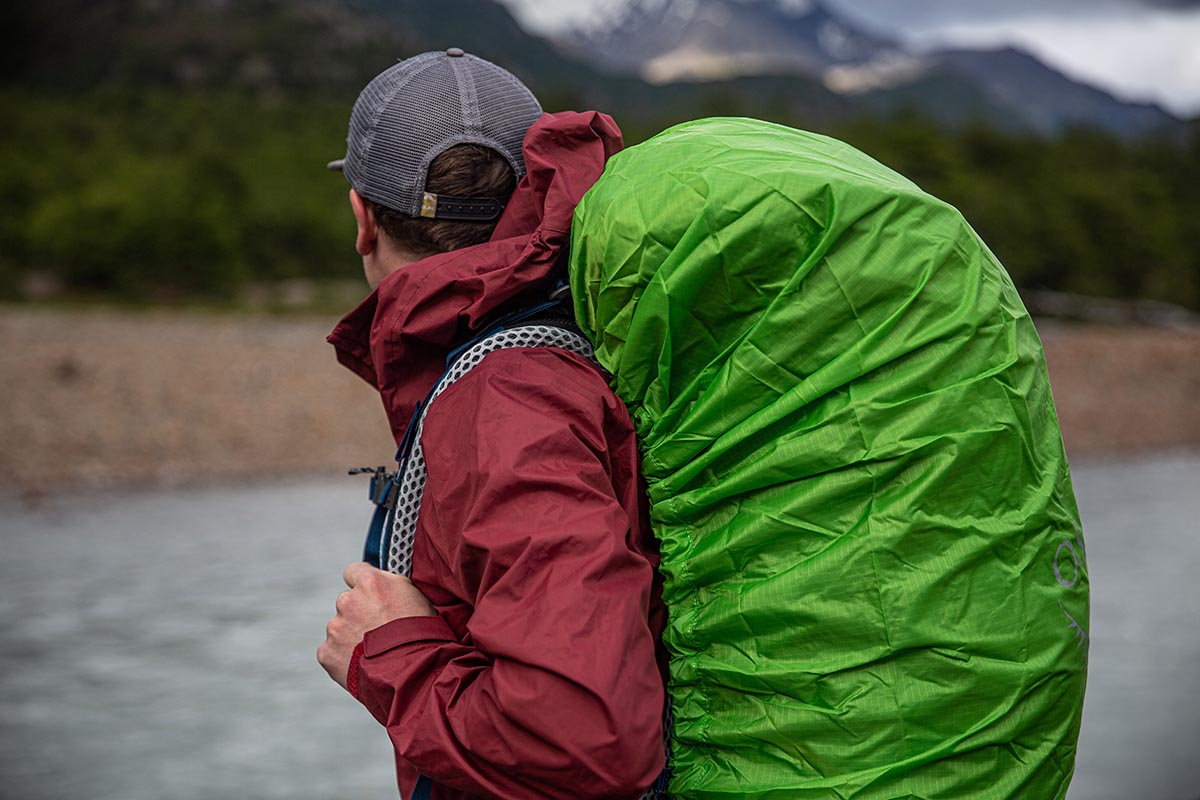
Unlike what you’d typically expect from an “LT” model, the Atmos AG LT 65 is a tough and very durable pack. They opted to retain the standard model’s 210-denier (D) nylon fabric on the pack body, and the base has an even beefier 500D nylon. In practice, this makes for a burly design that I had no qualms about while bushwacking, climbing up and under downed trees, and setting down on sharp rock. Through it all, the pack held up exceptionally well with zero signs of wear other than some light scuffs along the base. And in general, the build quality of the Atmos is excellent: I had no complaints with the sturdy zippers and buckles, the two-layer mesh backpanel is plenty tough, and even the stretchy material used on the side and front pocket is robust. It’s clear from my time with the pack that it’s made to last.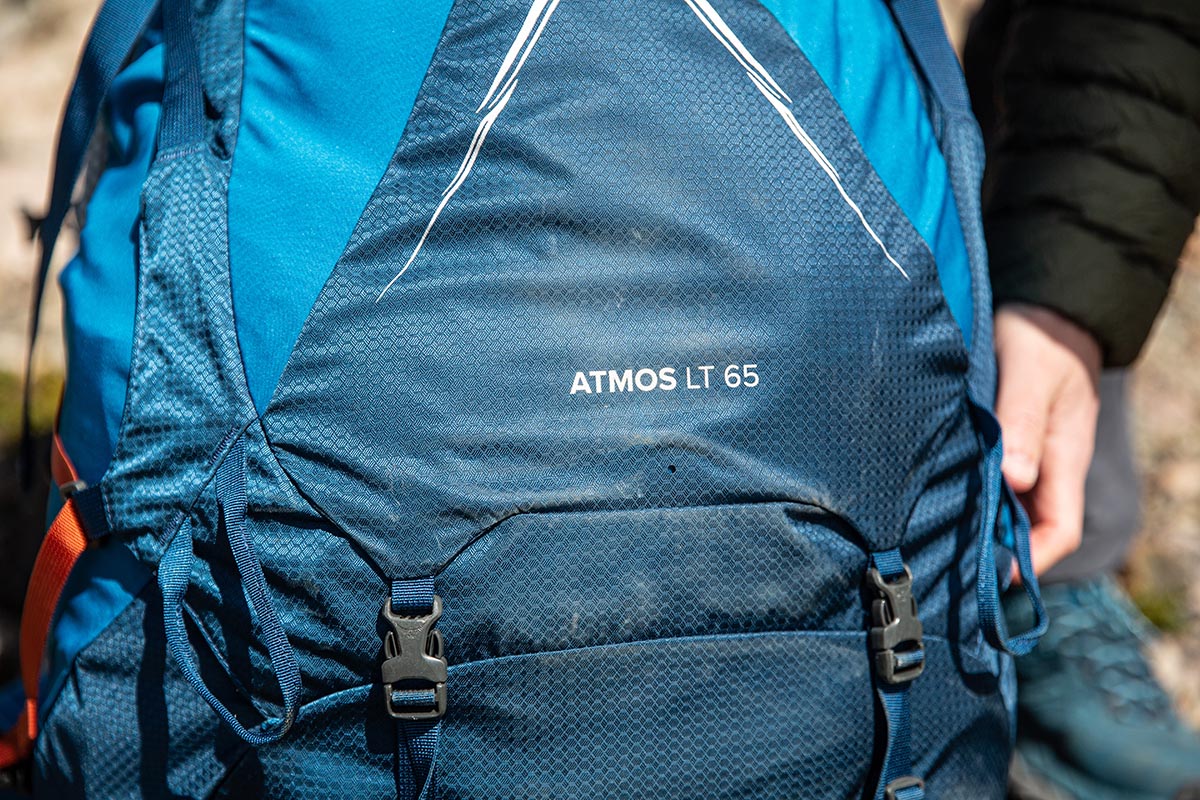
All that said, I couldn’t help but wonder if Osprey considered swapping in a lighter fabric for the pack body. Swapping the standard 210D to the 100D nylon found on their lighter Exos/Eja line, or even the NanoFly fabric on their “Pro” models could’ve cut even more weight. Perhaps an Atmos/Aura Pro is in the works—we think that’d be an awesome concept. There would be obvious compromises in durability, but it would made the Atmos LT an even more intriguing alternative to other light-yet-capable-haulers like the Granite Gear Blaze 60 (3 lbs. 2.7 oz.).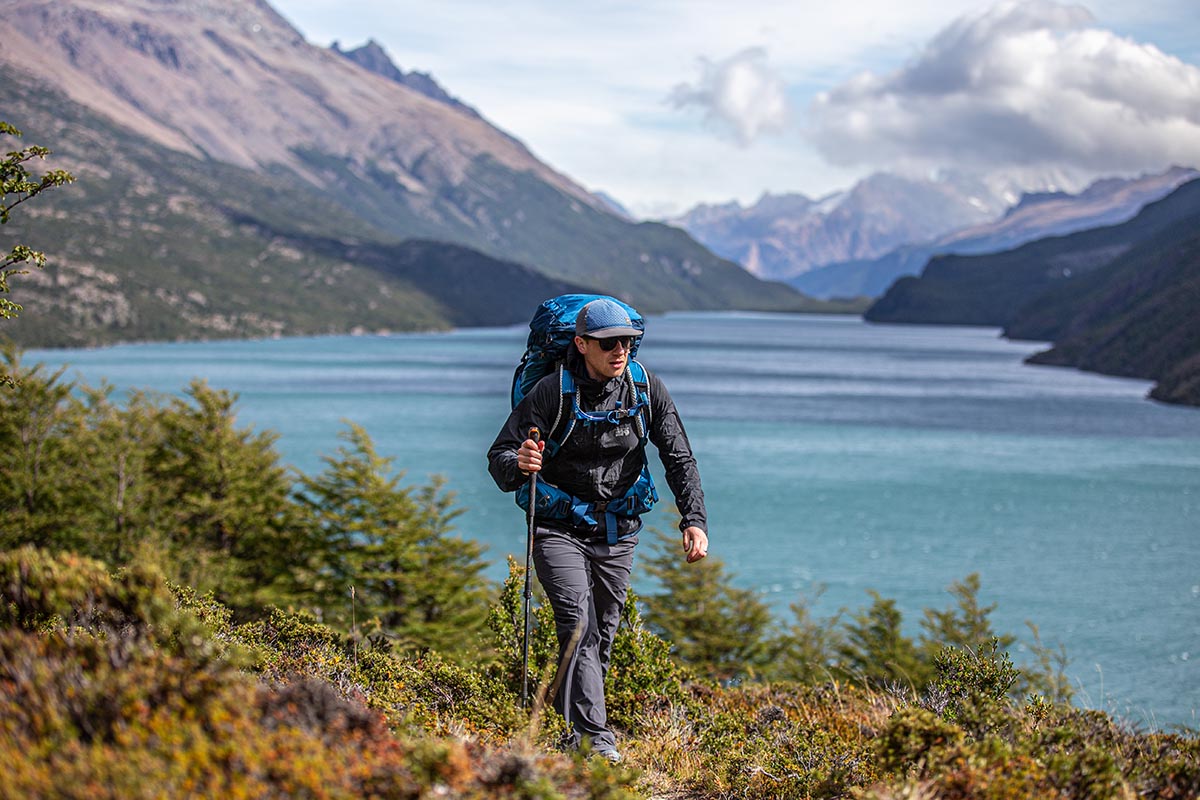
Osprey offers the Atmos AG LT in two different sizes, and I opted for the S/M (intended for torso lengths ranging from 16-21 in.). I have an 18-inch torso and found it really easy to get a great fit. There are five slots along the backpanel for adjusting the shoulder straps height, and I wound up at the second from the bottom. The pack also features adjustable padding on the hipbelt—Osprey calls this their Fit on the Fly system—which uses rip-and-stick material to slide the padding to your liking. As I mentioned above, the shoulder strap padding isn’t adjustable, but I didn’t find it to be an issue at all. One nitpick is that Osprey doesn’t include a waist size range for the Atmos, although based on the length of the hipbelt straps and the adjustable padding, it seems pretty expansive.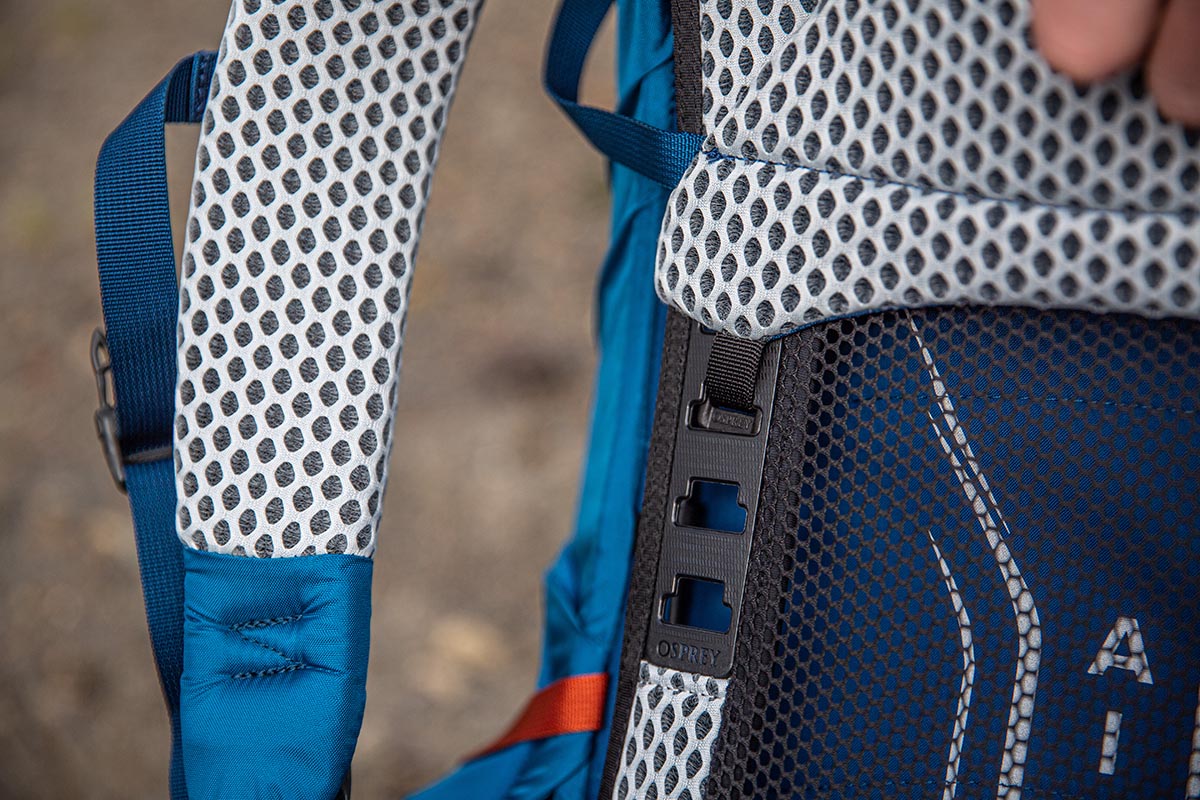
Osprey has made a strong push recently to incorporate eco-friendly materials into their designs. Specific to the Atmos AG LT, the entire pack is now made with recycled and bluesign-approved nylon, which indicates that the chemicals and materials used are safe for the environment, workers, and consumers. The durable water repellent (DWR) coating is also PFC- and PFAS-free (perfluorocarbons are known to be harmful to the environment). We’re big proponents of sustainable practices and happy to see Osprey leading the charge among pack manufacturers.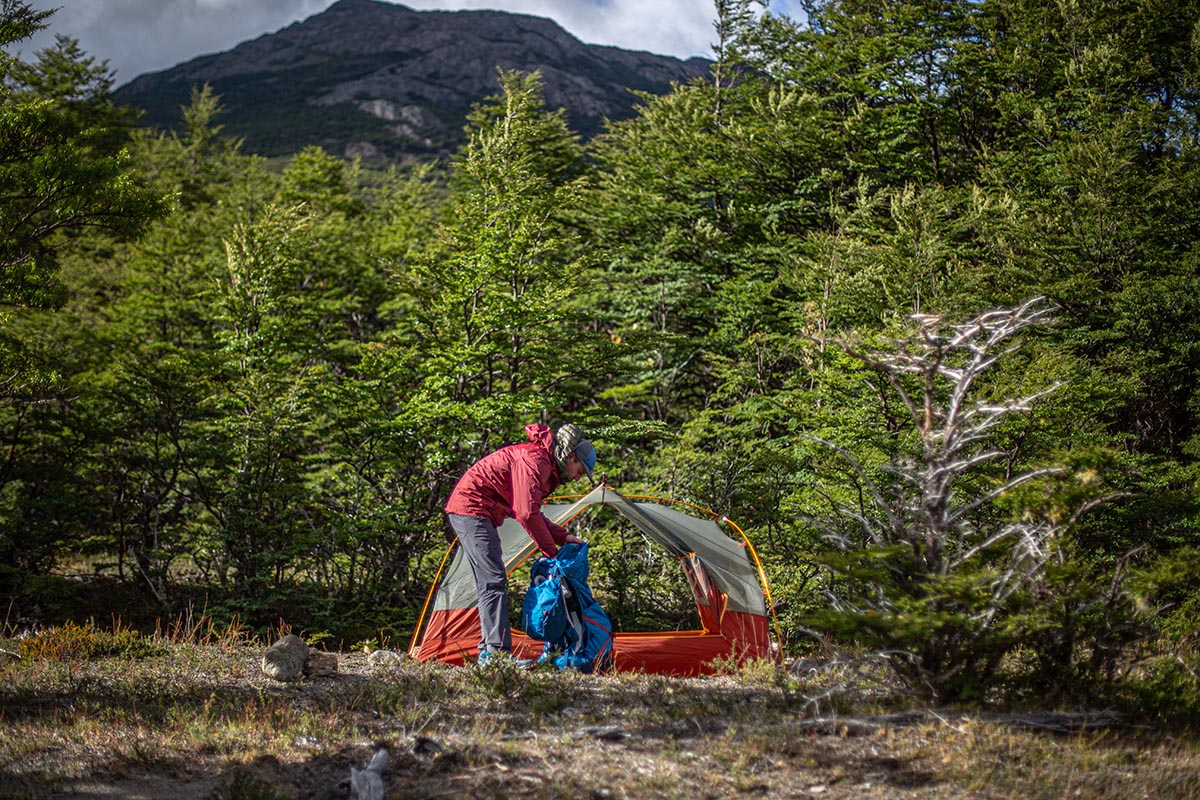
I tested the 65-liter version of the Atmos AG LT, but Osprey also makes it in a smaller 50-liter capacity. Compared to the 65, the Atmos AG LT 50 costs a little less at $270, shaves off roughly an ounce of weight (in the size S/M), and maxes out at 35 pounds. However, it retains all the storage options as its larger sibling, as well as features like the AntiGravity mesh backpanel, side zipper for accessing the main compartment, floating lid, and well-padded hipbelt and shoulder straps. In our opinion, the 65 is the more versatile size and worth the extra $20 (especially given that the 50 isn’t noticeably lighter). But for shorter trips and those used to packing light, the Atmos AG LT 50 is a viable option.
Alongside the men’s Atmos AG LT, Osprey released a women’s-specific Aura AG LT pack this year. We tested the two on the same backpacking trip, and they’re nearly identical in features and performance. Like the Atmos, the Aura comes in 50- and 65-liter capacities, but it offers a women’s-specific fit and different color options. Importantly, the two designs share the AntiGravity system and key features such as the pocket layout, high-quality fabrics, and external attachment points. For more, see our Aura AG LT review.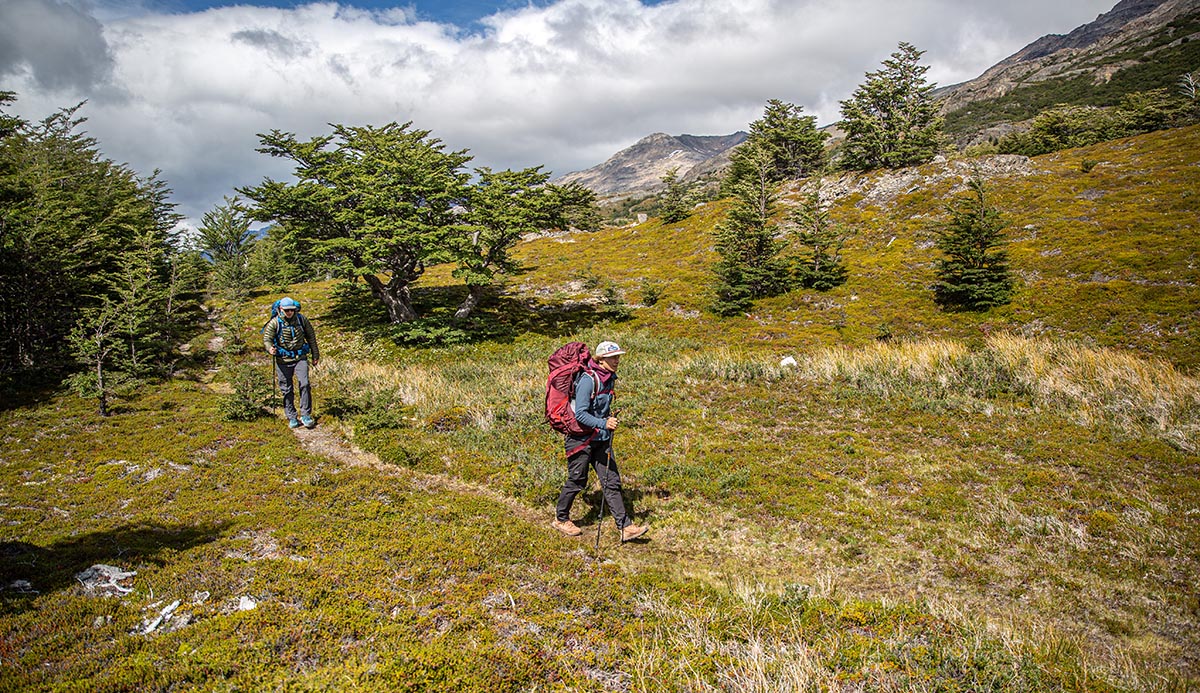
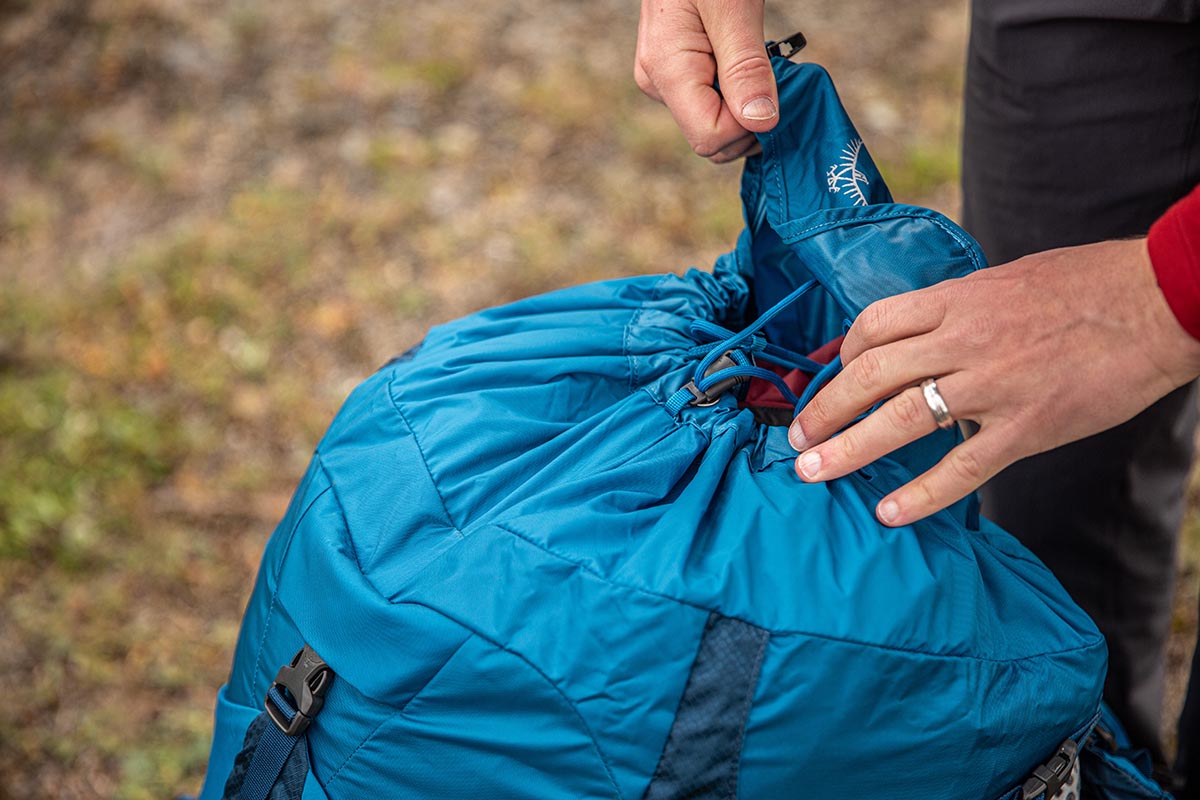
| Pack | Price | Weight | Fabric | Capacities | Access | Pockets |
|---|---|---|---|---|---|---|
| Osprey Atmos AG LT 65 | $290 | 4 lbs. 1 oz. | Nylon (210D & 500D) | 50, 65L | Top, front | 6 exterior |
| Osprey Atmos AG 65 | $340 | 4 lbs. 9.8 oz. | Nylon (210D & 500D) | 50, 65L | Top, front | 8 exterior |
| Gregory Paragon 68 | $280 | 3 lbs. 8.3 oz. | Nylon (100D & 420D) | 45, 55, 65L | Top, front | 6 exterior |
| Granite Gear Blaze 60 | $300 | 3 lbs. 2.7 oz. | Nylon (100D & 210D) | 60L | Top, front | 6 exterior |
| Osprey Exos 58 | $240 | 2 lbs. 13.4 oz. | Nylon (100D x 400D) | 38, 48, 58L | Top | 6 exterior |
| Osprey Aether 65 | $320 | 4 lbs. 14.7 oz. | Nylon (210D & 420D) | 55, 65L | Top, front | 7 exterior |
I’ve mentioned the standard Osprey Atmos AG throughout this review, and it’s the clearest backpacking pack alternative to the LT 65. The regular Atmos is a standout in carrying comfort, build quality, and ventilation, but weight has always been an issue at 4 pounds 9.8 ounces. Compared to the LT, the standard Atmos 65 is more than a half pound heavier due to additional organization (an extra side zip access to the main compartment, one more lid pocket and two front pockets, trekking-pole attachments on the shoulder straps, and dedicated sleeping bag storage) and added fit customization (including adjustable padding on the shoulder straps). Notably, both packs feature the same premium suspension, ventilated backpanel, and durable materials. In the end, both make a very compelling case and it'll come down to priorities in organization and price (the LT is $50 less).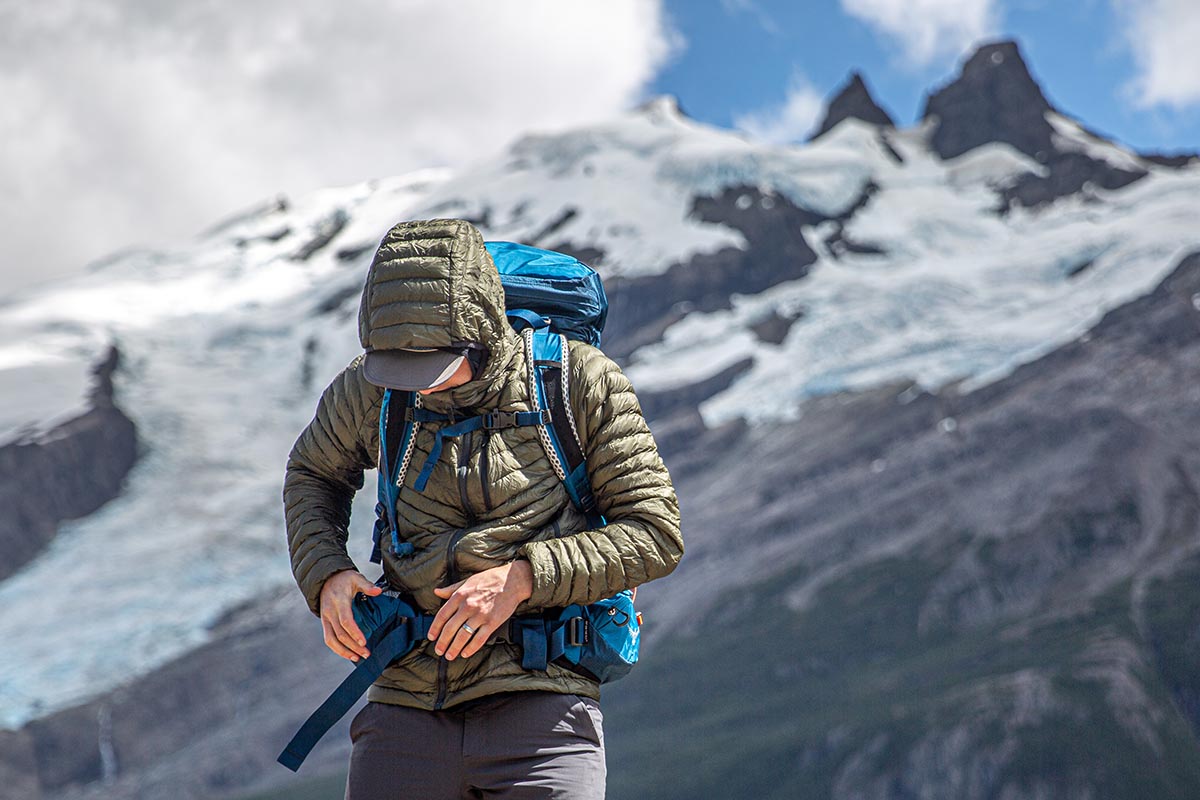
There aren’t many 65-liter packs that check in between roughly 3 and 4 pounds, but the Gregory Paragon 68 joins the Atmos AG LT 65. At $280 and 3 pounds 8.3 ounces, the Paragon is both more affordable and lighter than the Atmos, and Gregory advertises a load limit of 50 pounds (10 lbs. more than the Osprey). The pack also tacks on features like a second lid pocket and dedicated sleeping bag compartment. But that’s about where the favorable comparisons end for the Paragon: The Osprey is by far the better pack when it comes to comfort (the Paragon’s padding is a bit thin) and ventilation and offers a much more high-end feel. Further, the Atmos features a more durable construction with thicker fabric. For a time, the Gregory Paragon’s significant weight advantage would tip the scale for us, but now the LT makes it an easy choice.
Another light yet capable pack to consider is Granite Gear’s Blaze 60. The Blaze lacks the high-end finishes and frills of a modern design like the Atmos AG LT, but it’s well built and can support loads of up to 50 pounds. It also undercuts the Osprey in terms of weight (3 lbs. 2.7 oz.) and offers many of the same organizational features, including a removable lid, external dump pockets and hipbelt storage, and a tall zipper on the front for accessing the main compartment. The most noteworthy distinction between the two packs is the backpanel construction: The Blaze’s rigid foam simply can’t compete with the Atmos AG LT’s mesh in terms of ventilation and comfort. But the suspended mesh backpanel design is not for everyone, and there’s a lot to like about the more traditional Blaze.
Going deeper into Osprey’s lineup, the Exos 58 ($260) is an even more simplified pack for those who like to travel light. Checking in at just 2 pounds 13.4 ounces, it’s over a pound lighter than the Atmos, dropping weight through the use of thinner materials (100D and 400D nylon), streamlined organization (you only get top access to the main compartment), a smaller capacity, and a pared-down suspension system. As a result, the Exos’s carrying capacity maxes out at 35 pounds, and you don’t get the same plush comfort and load distribution of the Atmos AG LT (on the other hand, ventilation is still excellent). The Exos is a great option for backpackers who have already streamlined the rest of their gear—we love its minimalist design for quick overnights and fast-and-light missions—but most recreational users will want to stick with the more approachable Atmos AG LT.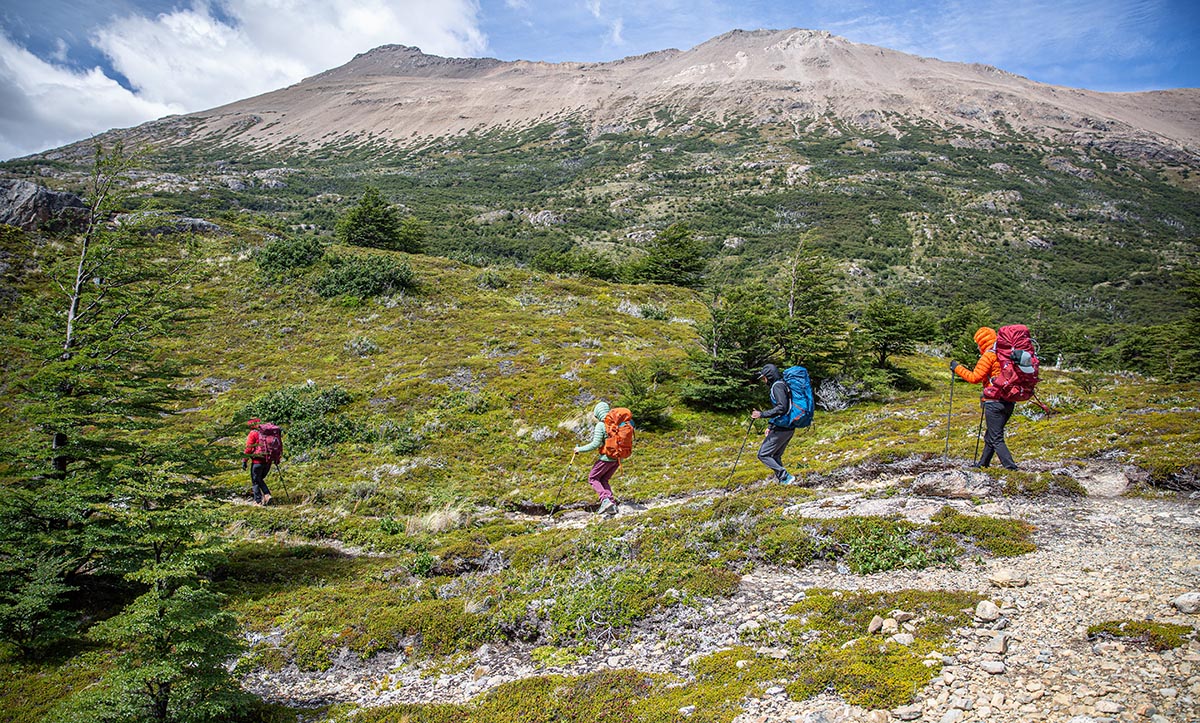
On the other end of Osprey’s pack collection is the Aether 65, which falls into the heavy hauler category. At 4 pounds 14.7 ounces, the Osprey Aether 65 is far from ultralight, instead prioritizing durability, comfort, and features. The Aether 65 no longer shares the Atmos’ AntiGravity backpanel, but its AirScape design still is decently breathable and works together with the hipbelt and shoulder straps to support loads up to 60 pounds. And unlike the Aether AG LT’s more streamlined organization, the Ariel offers a J-shaped front zipper for easy access to the main compartment and a dedicated sleeping bag compartment (for more, see our Aether 65 review). In most cases, we’d go with the lighter Atmos AG LT, but the Aether has its place for those shouldering serious weight or who like the extra features (of note, Osprey offers an even more feature-rich—and heavier—variation in the Aether Plus).